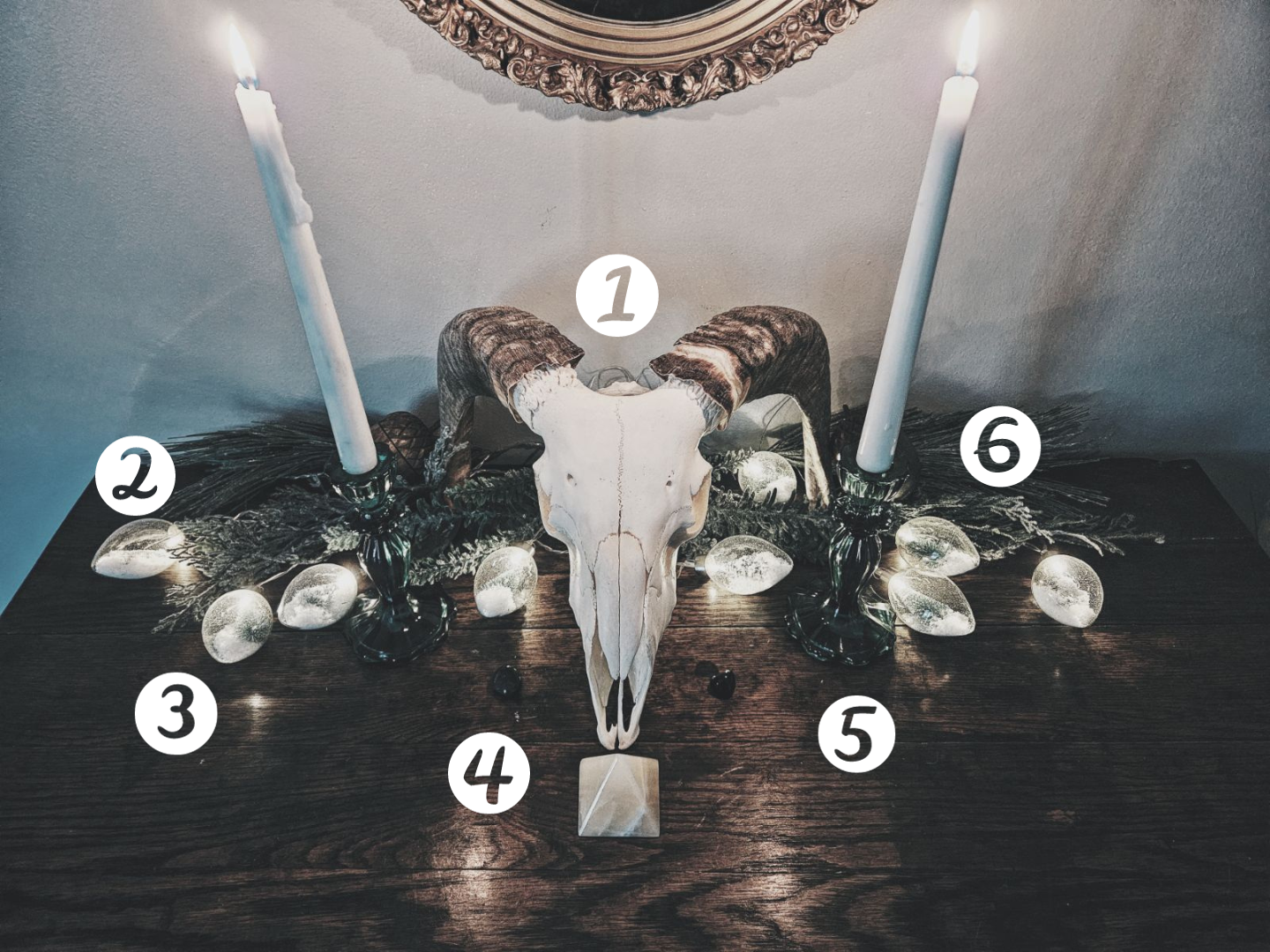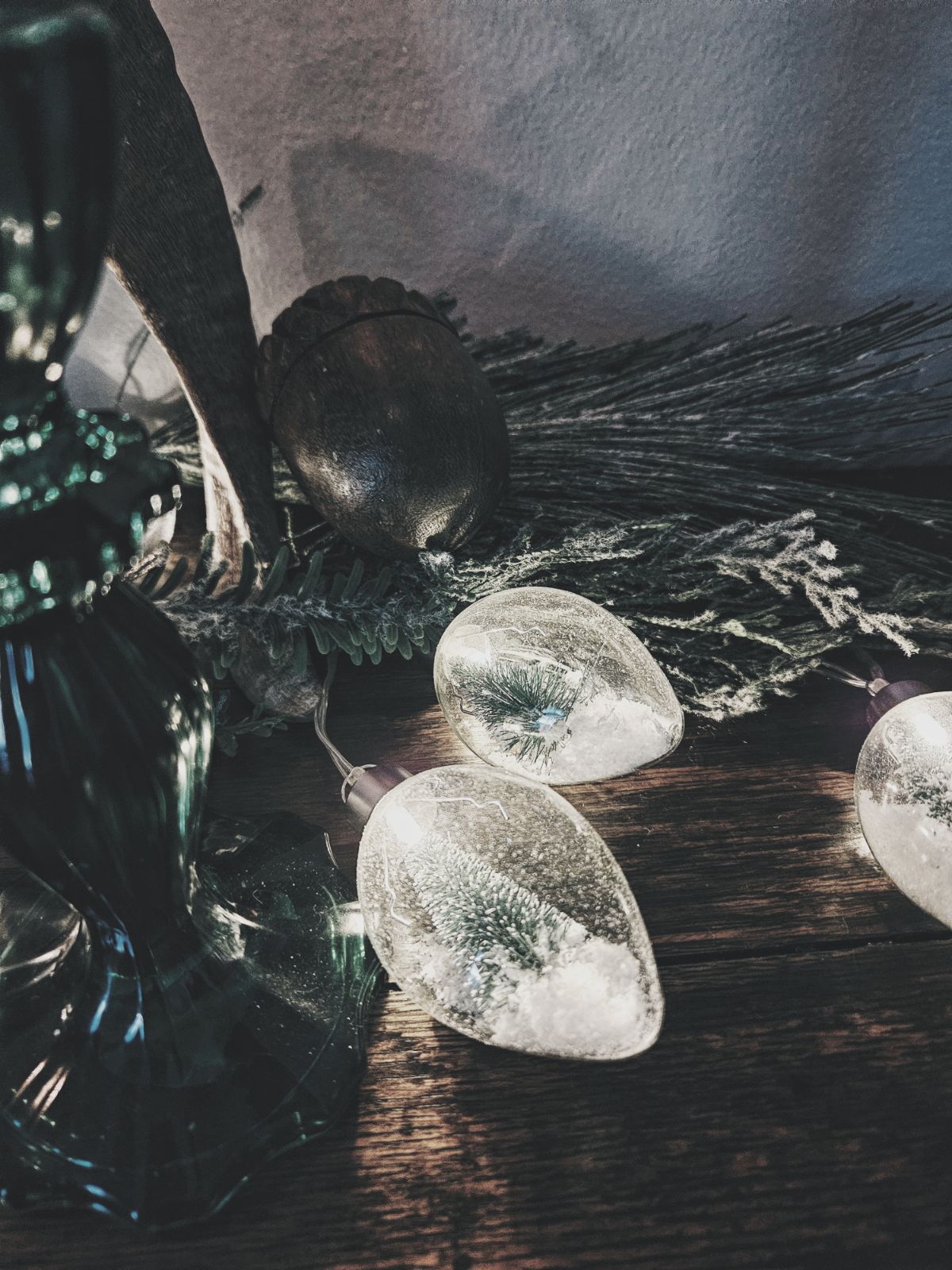Yes, I know this post is incredibly late, but if you follow me on Instagram, you know why. Between having to administer end-of-semester finals and state testing, dental surgery (which went incredibly well, by the way), the holidays, traveling, and getting engaged, the last thing I have had time for recently is blogging, or anything exceptionally witchy. Heck, we didn't even exchange gifts this year! Yule and Christmas felt a bit off without the gift exchange, but we just couldn't justify spending money on items we didn't really need when we knew we would be traveling. Besides, I think my engagement ring is the best gift I could have ever received. I haven't talked about my now fiancé on my blog, but just know he is an absolute treasure, and I am so thankful I found my person. But I digress!
Despite being busy, I did set up a simple Yule altar using some of my favorite items and some new ones as well. The Winter Solstice is the shortest day of the year, marking the final day of lasting darkness and the return of the Sun. The Winter Solstice has been celebrated by a variety of cultures for thousands of years as it marked an important transition in the Wheel of the Year. With it being the longest night, folklore sprung up around what happened in the dark, the most prominent of these European myths being the Wild Hunt. Candles were lit to drive away the darkness, keep out the demons, and encourage the Sun's return so that life would flourish once more. And in the darkness, a god was born. Depending on the tradition, this included such deities as Horus, Dionysus, Apollo, and the infamous Oak King. With these themes in mind, I created this year's Yule altar to brighten my spirits and bring prosperity and light into the new year.
1. Goat Skull- Goats are associated with fertility, virility, and lust (all themes associated with Yule), as well as independence, ambition, and persistence. Even against all odds, goats will give everything they have, reminding us to persevere even in the face of darkness. Goats also represent the Horned God who is reborn on the solstice. In Sweden, large straw goats, known as Yule goats or Julbock, are built on the first day of Advent. This may be a nod to Thor, whose chariot was pulled by two goats, or possibly the remnants of an old harvest tradition. Either way, the Yule goat has become a symbol of Yule in many Scandinavian countries and is said to watch over holiday preparations and even bring gifts, much like Santa. (Where did I get it: Gifted; Cost: Free)
2. Evergreen Greenery- Nestled around the goat skill is evergreen greenery, which is a traditional symbol of Yule, representing the Holly King, everlasting life, regeneration, vitality, and protection. Unlike deciduous trees that lose their leaves during the winter months, evergreen trees keep their leaves, remaining perpetually green and full of life, even during the darkest, coldest time of the year. Boughs of evergreen were commonly hung above doorways and placed on altars to prevent evil from entering the home, especially on the longest night of the year. It was also believed such greenery would promote health and wellness by warding away sickness. This may have something to do with the natural scent of pine and other evergreen plants, or the antiseptic nature of the tree's sap.
(Where did I get it: Target 2016; Cost: $5)
3. Bottle Brush Tree Lights- For those of you who don't know, I am absolutely obsessed with bottle brush trees. My current collection numbers well over 100 and when I saw these battery-powered lights in the checkout line at Home Goods, I knew I needed them in my life. Each light contains a miniature bottle brush tree, representing immortality, fertility, and protection. Evergreen trees were often brought into the home and decorated with candles, lights, and shiny objects to bring joy to those within while also warding away ghosts, witches, and other evil spirits during the Winter Solstice. The snowy scene within is also associated with purity and new beginnings, while the light represents the Sun who is reborn during Yule.
(Where did I get it: Home Goods 2023; Cost: $10)
4. Bloodstone and Orange Calcite- Bloodstone was known as heliotrope by the Ancients which comes from the Greek
helios meaning "sun" and
trepein meaning "to attract." As such, bloodstone or heliotrope signifies "sun-turning" and is said to attract the rays of the Sun. Like the candles, this is a form of sympathetic magic to bring forth the rebirth of the Sun and ward off the neverending night. Orange calcite, on the other hand, encourages personal power, enhances creativity, and increases positivity. It's most commonly used to dispel depression, which is extremely common this time of year due to the lack of sunlight.
(Where did I get it: Various Subscription Boxes and Gifted; Cost: ~$3)
5. White Candles & Green Candle Sticks- The ward off the darkness, candles were lit to protect those within on the Winter Solstice from dangerous spirits and the Wild Hunt while simultaneously ushering in the return of the Sun. For this reason, I have placed two white candles, which represent the Sun, purity, and renewal, on my altar. Furthermore, the Sun is reborn on the Winter Solstice, the candles being an offering to His return. I went with green candle holders, a common color associated with Yule, to promote health, fertility, growth, abundance, and the Holly King.
(Where did I get it: Candles- Dollar Tree; Cost: $1, Candle Holders- Home Goods 2023; Cost: $16, $8 each)
6. Wooden Acorns- One of my favorite myths is the tale of the Oak and Holly Kings. The Holly King is at his peak during the Winter Solstice, but his power begins to weaken as the Oak King, who is reborn on the Winter Solstice, regains power. The two wooden acorns flanking each side of my altar are an ode to the Oak King. They also represent strength, new life, and rebirth, a promise of what is to come once the darkness passes. Oaks are well known for their protective nature, which is needed on the longest night of the year. The acorns not only represent the Oak King and the strength He provides but also provide my home with protection from wayward spirits and the Wild Hunt. (Where did I get it: Gifted; Cost: Free)
TOTAL COST: ~$35
Like my other altars, most of the items I use are found, made, or purchased for around $1, although if the items must be purchased by you, then the cost will be higher. This altar is more expensive than some of my previous altars because I wanted to include some new items I purchased this year. I hope you find this sort of breakdown helpful, especially for those of you looking to create Instagram-perfect altars on a budget!








No comments :
Post a Comment
This witch loves to hear from her readers, so please share your thoughts below!